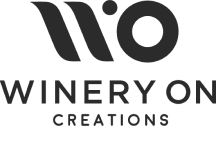If you are a wine lover and want to broaden your knowledge, you are in the right place because we are going to tell you how to distinguish a good wine from one that is not. A process that ranges from the type of soil to the way in which the wine is bottled. Knowing and understanding each part of the production process helps to recognise the nuances that distinguish a well-made wine from an ordinary one. As is the case with DEMUERTE wines.
How to distinguish a good wine
There are people who like wine, but not all of them know what a good wine is or what characteristics it has. In order to be able to do so, you have to be much more than a wine consumer; you have to have knowledge, experience and a sensory appreciation that goes far beyond drinking. It is about identifying the main characteristics of that wine, as well as its structure, balance and complexity.
This knowledge makes up a science called oenology, a field dedicated to the study and analysis of wine. In other words, in addition to establishing the elements involved in wine tasting, it also deals with its production and the relationship it has with the set of techniques and care used to cultivate the vine.
Becoming an oenology expert
Anyone who wants to become a wine expert must be trained. That is to say, you must know which grape varieties exist, the winemaking techniques that are applied and the peculiarities of each production area. All this helps to better understand why a wine stands out from the rest. Thus, for example, knowing the Monastrell grape gives information to better appreciate our DEMUERTE wines.
In addition, a wine connoisseur should delve into concepts such as acidity, tannins and body, each of which can be interpreted correctly when reading the label on a bottle of wine. In this sense, it is very useful to read specialised books, attend tastings guided by experts and visit wineries.
Viticulture and tasting
The type of soil, the climate and agricultural practices such as pruning, irrigation and water stress management affect the quality of the grapes and influence the development of the vines and, consequently, the wine obtained from them. This is what we call viticulture.
Another way to improve the ability to recognise a good wine is through tasting. A procedure that goes beyond tasting, as it carries out a complete sensory analysis of the wine it is aimed at.
For those who already have a degree of mastery, blind tastings and vertical tastings are developed. In both, different vintages of the same wine are tasted, which allows the palate to be trained and to distinguish how different aspects such as the year of production or climatic conditions affect the wine.
Complementary studies
Participating in oenology certification programmes helps to build a knowledge base that goes beyond the experience itself. These programmes have a broad curriculum covering topics such as viticulture, winemaking and wine styles, which helps to get a comprehensive view of the sector.
In addition, it is important to become familiar with the most popular wine regions. To get to know their particularities and to recognise how this is reflected in wines with unique personalities. In Spain, for example, there are more than 100 wine regions covered by one of the Protected Designations of Origin (PDOs). For us, the most important is that of Yecla, under which our DEMUERTE wines are produced.
Objective: to recognise a good wine
So, if you want to know how to distinguish a good wine, you must educate yourself in all senses. Not only in terms of its physical aspects, but also in all that it entails from a cultural and economic point of view. Only in this way will you be able to understand everything that lies behind a bottle of good wine.


